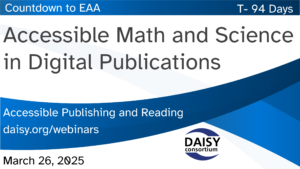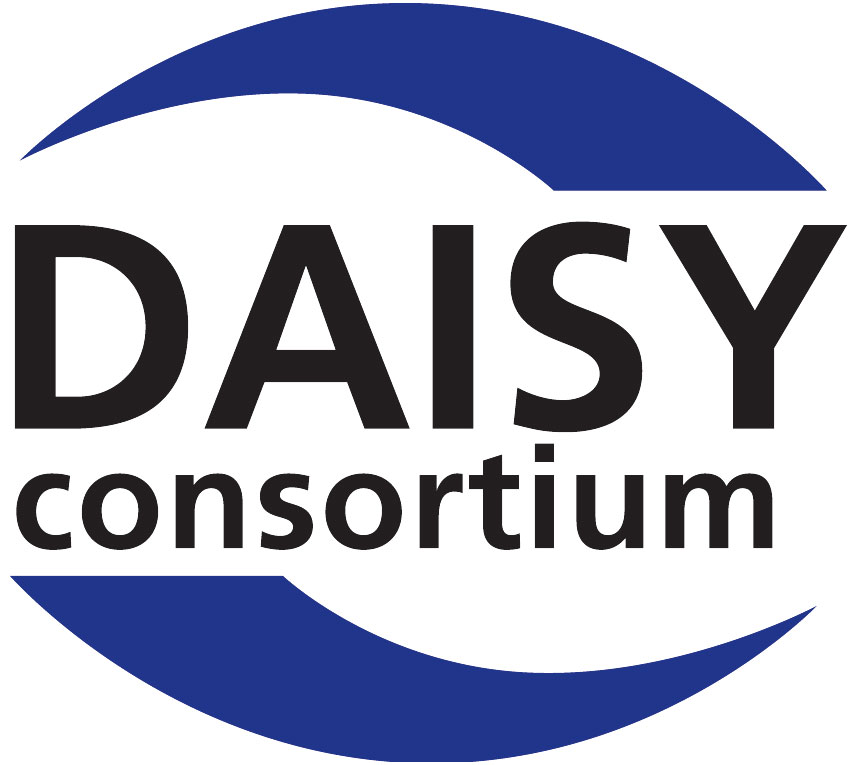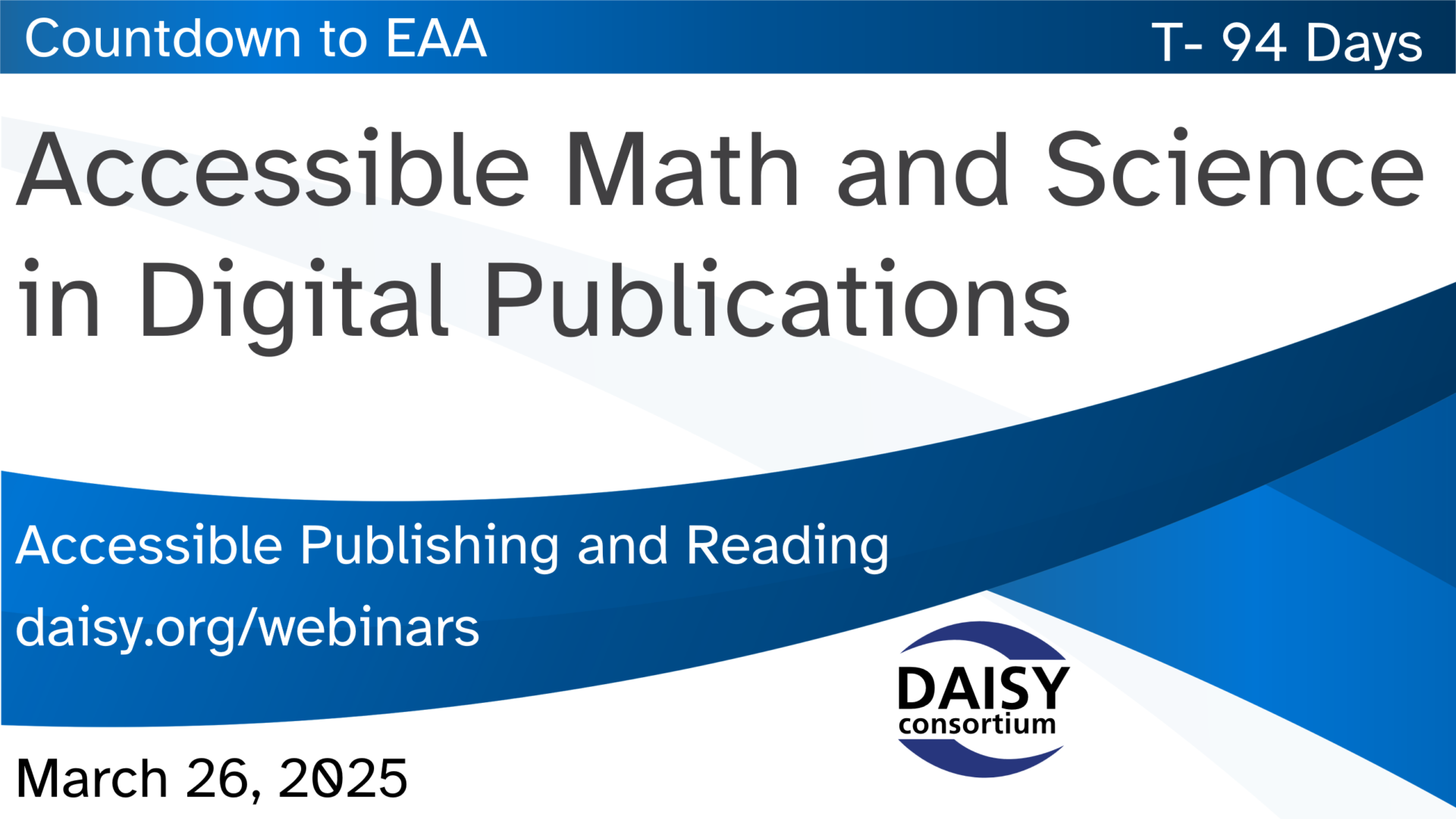Accessible Math and Science in Digital Publications T-94 (W)
 In our series of free weekly webinars March 26th saw a session focused on Accessible Math and Science in Digital Publications, highlighting the latest developments in math and science content authoring and reading and helping to make complex content feel a little more manageable.
In our series of free weekly webinars March 26th saw a session focused on Accessible Math and Science in Digital Publications, highlighting the latest developments in math and science content authoring and reading and helping to make complex content feel a little more manageable.
This page contains:
Full Video of the Webinar
Speakers
- Richard Orme, The DAISY Consortium—host and chair
- James Yanchak, Taylor and Francis
- Rachel Comerford, Macmillan Learning
- Neil Soiffer, Math Accessibility Expert
Session Overview
Richard Orme welcomed everyone and introduced today’s topic of Accessible Math and Science. Making this complex information accessible is often challenging, and understanding how users with print disabilities can access that information is key to providing the best experience.
James Yanchak
James began his presentation by describing some of the extremely complex content that Taylor and Francis have published for many years. Math titles make up a large component of this portion of their list and James explained the challenge that authors have in delivering MathML, which has become the default method for the presentation of math in EPUBs and on the web.
James showed us some of the different submission methodologies that Taylor and Francis authors use and what these look like behind the scene in terms of accessibility. Using the quadratic formula as an example, James began by looking at submissions in word which has its own equation editor, in LaTex, in ASCII math and even as text. Each submission method presents challenges when converting to MathML which offers the most accessible version of the equation, leaving nothing open to interpretation and with a high level of structure.
James’ slides are a must see to truly grasp these challenges and to understand how MathML offers the best solution.
In addition to math, Taylor and Francis works with chemistry content which is even more complex to convert. James expects the upcoming MathML 4 with its “intent” feature will help with some of the complexities he described but for the moment there is much additional work required behind the scenes to structure and organize chemical and engineering content to make sure that the all coding is precise and exact.
Rachel Comerford
Rachel spoke to us about Accessible STEM content at Macmillan Learning and the organizational approach that has been so important to their success. Macmillan hopes to
Shape tomorrow with today’s ideas
and Rachel directed us to the Universal Design for Learning Framework which has informed much of their approach. UDL is a set of guidelines that sets to goal of meeting different types of learners’ needs by providing a framework for content provision. It targets:
- engagement (the why)
- representation (the what)
- action and expression (the how)
Using the framework Rachel presented 2 practical examples of how UDL works: extended alt text techniques and how to integrate alternative interactions for STEM concepts. Both examples are well worth watching in the recording and offer suggestions for implementation that benefit all readers.
Neil Soiffer
Neil spoke to us about math accessibility and his work on the Math Capable Assistive Technology (MathCAT) Library soon to become a default inclusion in NVDA and JAWS screen readers. Neil began his presentation by giving us a demo of exactly how math sounds via a screen reader – vital for our understanding of the complexities of this subject. This demo also shows the challenges for the user in setting up, in dealing with a variety of different formats and for interpreting some of the ambiguities that still remain.
Following this Neil talked about LaTeX accessibility and the work that has been done to export accessible PDFs and showing users how to get the best out of math in a PDF and what might be coming in the future.
Finally Neil gave a demo of how regional differences and different languages supported by MathCAT can be used in which is an exciting development.
Related Resources
Links mentioned in the webinar:

